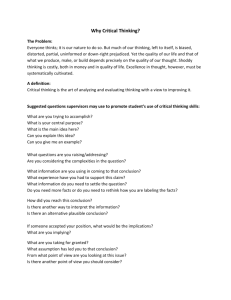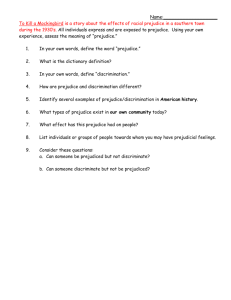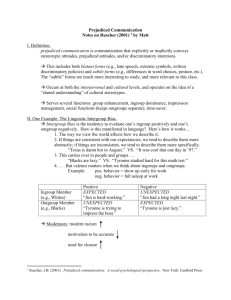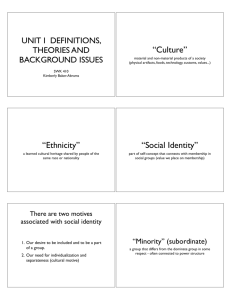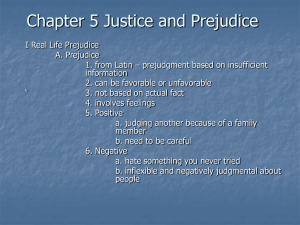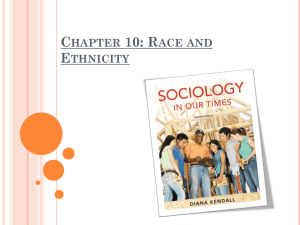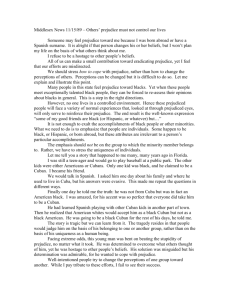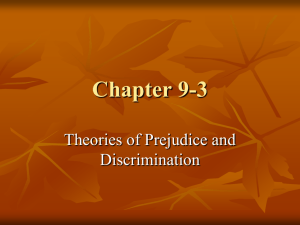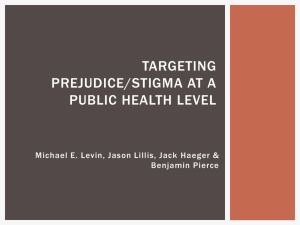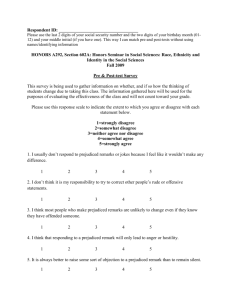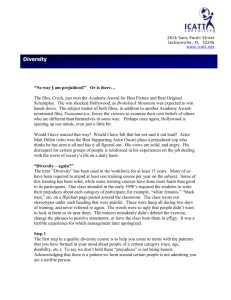Discrimination and Prejudice
advertisement
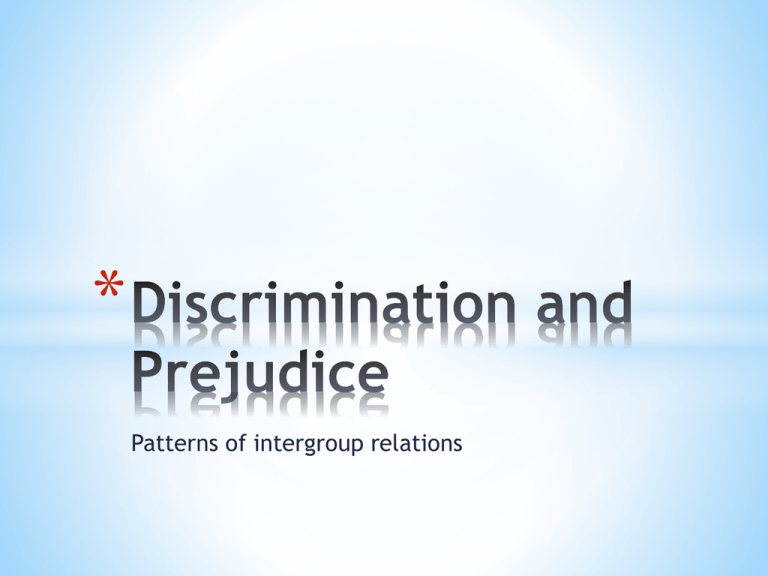
* Patterns of intergroup relations *Is the denial of equal treatment to individuals based on their group membership. *Involves behavior *Can be individual or societal *In most extreme form can lead to physical harm or even death * * Upheld by law * Examples: * the apartheid system in South Africa. * Women in the U.S. prior * Is an product of the structure of a society. * In this case it becomes a part of a society. to 1920 * African Americans and the Jim Crow laws * Example: leads to lowincome communities. * * Protestors to Brown v Board of Education (1956) ended practice of separate-but-equal in the U.S. schools. * * Definition: An unsupported generalization about a category of people. * Prejudice refers to attitudes. * You can be prejudiced for or against something. * Sociologists focus on the negative attitudes. * * Stereotype is an oversimplified, exaggerated, or unfavorable generalization about a group of people. * Examples: All Irish people have bad tempers, all Jewish people are cheap. * Consequences: If people are told often enough and long enough that they, or others are socially, mentally, or physically inferior, they may come to believe it. * * Robert K. Merton * A prediction that results in behavior that makes the prediction come true. * * The belief that one’s own race or ethnic group is naturally superior to other races or ethnic groups. * Throughout history, racism has been used as a justification for atrocities such as slavery and genocide. * * Prejudice and discrimination are related, but they do not always go hand-in-hand. Individuals can combine discrimination and prejudice in four possible ways. *Prejudiced and openly discriminates against others. *Prejudiced but is afraid to discriminate because of societal pressure. * *Not prejudiced but discriminates anyway because of societal pressure. *Not prejudiced and does not discriminate. * * What is the difference between discrimination and prejudice? Give an example to illustrate the difference. * Is it possible to be both prejudiced and be discriminatory? Prejudiced but not discriminatory? Explain. *
